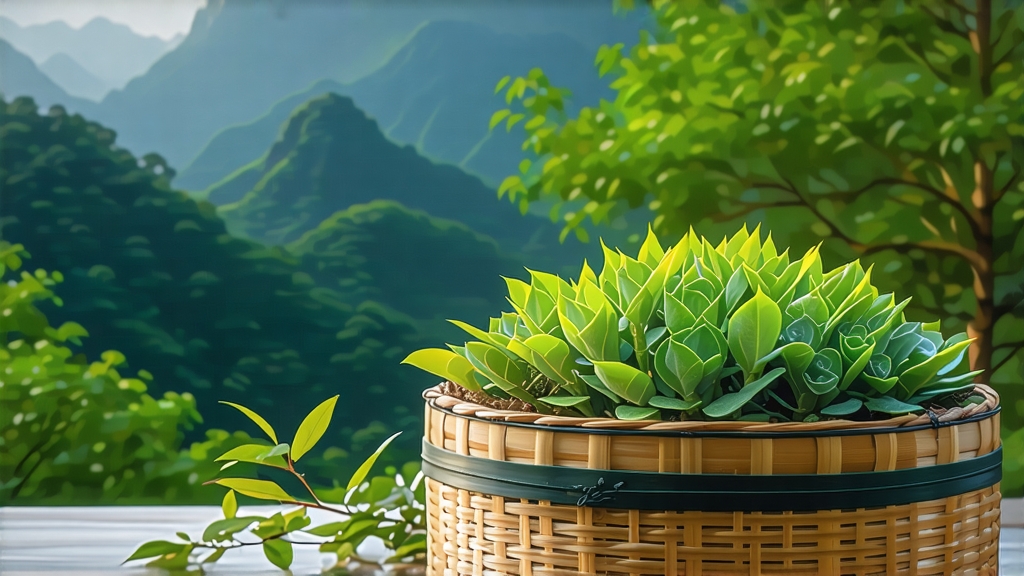
Tucked high on the mist-veiled slopes of Mt. Meng in Sichuan province, Meng Ding Huang Ya has been quietly radiating a soft golden glow for more than twelve centuries. To most Western drinkers “yellow tea” is still a color rather than a category, yet this single bud-and-leaf pluck embodies the most elusive transformation in all of Chinese tea craft: the slow, breath-controlled “men huang” step that edges green tea toward amber without ever surrendering to the dark oxidation of oolong or black tea. The result is a liquor that tastes like early springwater poured through a silk sleeve—delicate, orchid-sweet, with a returning coolness that Chinese poets once described as “snow in the mouth on a warm day.”
Historical scrolls first record Meng Ding tea in 724 CE when the Tang emperor received a gift of “first-rain buds” from the prefecture of Ya-zhou. By the Song dynasty the monastery on the summit was granted sole right to harvest the 108 trees that grew along the ridge nicknamed “the Imperial Terrace,” and every Qingming festival the abbot himself carried the sealed bamboo tubes down the mountain to present to the throne. When the Ming court moved its capital north, the tea continued to travel the Min River to the Yangtze, then along the Grand Canal, arriving in Beijing while the leaves still held the mountain fog. European travelers of the 19th century sometimes tasted it in Canton trading houses, but because yellow tea refuses to travel well—its aroma collapses under salt air—export never flourished, and Meng Ding Huang Ya remained a courtly secret.
Botanically the cultivar is a local variant of Camellia sinensis var. sinensis that has acclimated to 1,200–1,450 m elevation. The bushes sit just below the cloud line where diurnal temperature swings reach 15 °C, forcing the leaves to thicken their epidermis and concentrate aromatic amino acids. Farmers still observe the rule “three whites, one green”—selecting only buds sheathed in downy silver, a single unfolding leaf, and a sliver of stem no longer than a fingernail. Picking begins at dawn on the 20th day after the spring equinox, when the mountain is still locked in a cool, 85 % humidity cocoon; by 9 a.m. the baskets are carried to the monastery courtyard where the first sorting takes place in shade.
The craft sequence follows five precise stages, each calibrated to the mountain’s microclimate. Withering is done indoors on thin bamboo trays angled toward the east; cool air drawn through latticed windows reduces leaf moisture to 68 % within three hours, softening cell walls without bruising. Fixing comes next in iron woks heated to 160 °C, but the toss-and-press motion is gentler than that used for Longjing—only enough to halt oxidative enzymes while preserving the downy hairs. The pivotal “men huang” begins when the still-warm leaves are wrapped in thin cotton cloth and left to breathe inside a pine-wood chest. Every forty minutes the master opens the bundle, fluffs the leaves, re-wraps them, allowing a non-enzymatic yellowing to creep outward from the central vein. Over six to eight hours the leaf color shifts from jade to pale wheat, amino acids convert into volatile lactones, and a quiet honey note emerges. A second, lower-temperature drying locks in the color, followed by a final charcoal bake using local oak that imparts a trace of alpine incense. When finished, one kilogram of dry tea contains roughly 32,000 buds, each curved like a sparrow’s tongue and dusted with microscopic gold.
Western brewers often mistake Meng Ding Huang Ya for a white tea and treat it to 80 °C water in a glass beaker; the leaf uncurls prettily but the cup turns thin and grassy. The traditional Gongfu approach is kinder: 5 g of leaf in a 120 ml porcelain gaiwan, water at 85 °C, flash rinse to awaken the buds, then successive steeps of 15 s, 25 s, 35 s, 50 s, 70 s, 90 s. The first infusion releases a pale champagne liquor and an aroma of fresh lychee; the second deepens to golden straw with notes of steamed edamame and orchid; the third introduces a cooling menthol finish that lingers on the breath. Because the leaf is robust, six to eight infusions are possible